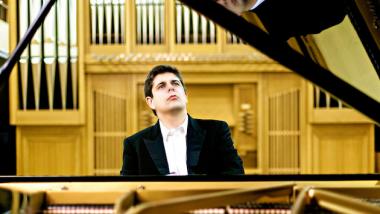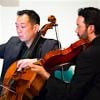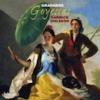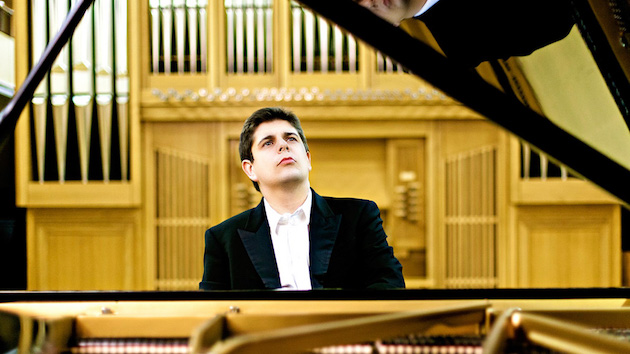
In the first half of the 20th century, what did French composers imagine Spain to sound like? On Saturday evening, the San Francisco Symphony answered this question by programming three Spanish-inspired works by two French composers: Debussy and Ravel. A Spanish guest conductor, Pablo Heras-Casado, led the performance. A splendid Spanish pianist, Javier Perianes, stood out in Bartók’s Third Piano Concerto, as well as an in encore by a prominent Spanish composer, Manuel de Falla.
The concert opened and closed with pieces by Ravel. His Alborada del gracioso was originally part of a piano suite, but on Saturday the musicians played its symphonic version. An alborada is a song that is typically accompanied by guitar. Two prominent harps, as well as pizzicato strings, represented that instrument. The role of the vocalist drifted across the orchestra, ranging from a bassoon singing the blues to cheerier, widespread noodling that led to a riotous, explosive ending.
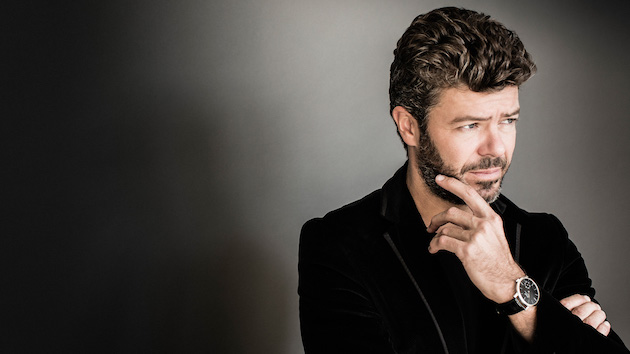
After Ravel’s folk-inspired work, another folksy one followed. Bartók, a Hungarian composer, wrote his third piano concerto in 1945 as a gift to his second wife as he was dying in a New York hospital, exiled from his homeland by World War II.
The concerto opened with a delicate Allegretto. With a Hungarian tune that the soloist introduced amid generally soft dynamics, the movement sounded like the composer was less battling death than revisiting old memories. Sensitive and cerebral, Perianes repeatedly melted into the broader orchestral texture. Next, there was a longingly exquisite, hymnlike Adagio, which had a wind-dominated middle section mimicking bird calls. By stark contrast, the closing Rondo was lighthearted and bright — it’s hard to imagine that Bartók wrote it when he knew he was dying.
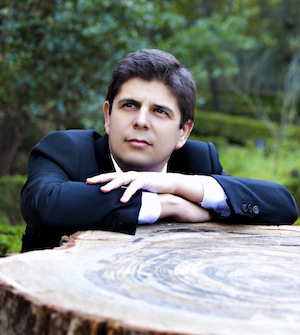
After three rounds of applause, Perianes treated the audience to a solo encore, de Falla’s “Ritual Fire Dance.” Originally, the piece is from a ballet about an Andalusian gypsy who dances — with ever-increasing fervor — around a fire with her husband’s ghost. Perianes flaunted this piece’s ornate lyricism and brute virtuosity. He culminated with a coda that was both musically and visually stunning, replete with precise, simultaneous glissandos in both hands but in opposing directions. The audience adored it.
During intermission, Perianes changed into street clothes, and found a seat in the hall to hear the second half. It started with Debussy’s Ibéria from Images pour orchestre. Like the bigger Images, Ibéria is in three sections. In the first, “Par les rues et par les chemins” (Along the highways and byways), Debussy painted a joyous, curious frolic through Spanish streets. Mostly the winds passed around a sinewy, restless melody. Next, the attempt to capture nighttime musically in “Les Parfums de la nuit” (The perfumes of the night) reminded me conceptually of the inner section from Bartók’s Adagio. Like a dream recalling the previous day’s events in slow motion, a gorgeous oboe solo here recapitulated a melody from “Par les rues.”
The orchestra gradually awoke for the final section of Ibéria, “Le matin d’un jour de fête” (Holiday morning). Per the composer’s directions, the violins and violas enjoyed holding their instruments like guitars in this exuberant finale. A lot happened simultaneously here, as though the musicians were soon-to-be partygoers with individual to-do lists in preparation for the party.
After that excitement, Ravel’s iconic Boléro opened with legendary restraint. This piece has a snare drum that plays the same bolero rhythm throughout, and on Saturday, the drummer stood center stage, close to Heras-Casado. Starting with the solo flute, the musicians handed off this piece’s theme, which is as elusive as it is unforgettable. Like a soldier marching toward an inexorable, deadly fate, the piece ultimately gave way to a fiery flourish of an ending. The audience gladly sustained its applause while Heras-Casado acknowledged the contribution of every soloist.
Taken together, these pieces show that Debussy and Ravel imagined Spain in many lights, ranging from mysteriously exotic to stereotypically boisterous. Regardless of whether the musical evocations of these two composers are authentic or accurate, both Heras-Casado and Perianes were excellent ambassadors of Spanish artistry. And if you missed them in San Francisco, you need not necessarily travel to Spain to hear them: Musicians of this caliber perform all around the globe.

